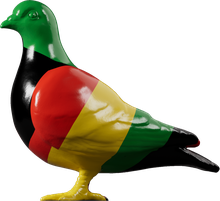Archaeology — 1640-1666; 17th century
Great Fire tobacco pipe
The fashion for smoking added to the risk of fire in London. Tobacco was first brought to Europe from the Americas in the mid-1500s and the custom of smoking it in a pipe became popular from the late 1500s. The earliest pipes had very small bowls, reflecting the high price of tobacco at that time. It was thought to be good for the health and was recommended as a treatment for asthma, consumption and gout, among other things.
Not everyone agreed - King James I disapproved of smoking so much that he wrote ‘A Counterblaste to Tobacco’ in 1604. During the 1600s it grew in popularity and by 1614 there were 7000 tobacco shops in London. During the Great Plague of 1665 tobacco smoking was recommended as a preventative. By this time, men, women and even children smoked tobacco pipes. This example dates from the mid-1600s.
This tobacco pipe was found during the excavation of a shop on Pudding Lane that had burnt down in the Great Fire of London.
- Category:
- Archaeology
- Object ID:
- PEN79[337]<335>
- Object name:
- Great Fire tobacco pipe
- Object type:
- Artist/Maker:
- —
- Related people:
- Related events:
- Related places:
- Production date:
- 1640-1666; 17th century
- Material:
clay tobacco pipe
- Measurements/duration:
- L 132 mm, L 132 mm, W 35 mm, T 20 mm (overall)
- Part of:
- —
- On display:
- —
- Record quality:
- 100%
- Part of this object:
- —
- Owner Status & Credit:
Archaeological archive
- Copyright holder:
digital image © London Museum
- Image credit:
- —
- Creative commons usage:
- —
- License this image:
To license this image for commercial use, please contact the London Museum Picture Library.

